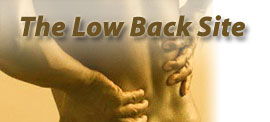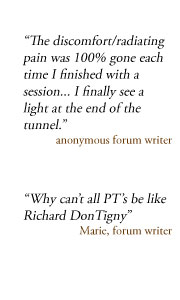|
In the early 1900s dysfunction of the sacroiliac
joint was a common diagnosis and commonly associated with pain
in the sciatic nerve. In 1925 Danforth and Wilson studied this
relationship and concluded that the sacroiliac joint could not
be at fault because there was no canal, nor semblance of a
canal that held the nerves against the joint. At that time no one
understood the biomechanical
relationship between the sacroiliac joint and the sciatic nerve.
In 1934 with the work of Mixter and Barr, all emphasis in research and treatment
shifted to the herniated intervertebral disk. White concluded that because nonspecific
back pain often precedes disk herniation the disk is a likely source of the preceding
idiopathic low back pain. This etiology has never
been proven. Intervertebral disks frequently degenerate without producing any
symptoms of low back disorders.
Presently used testing and procedures for the conventional evaluation and treatment
of low back pain were developed and endorsed at the American Academy of Orthopaedic
Surgeons' symposium in Toronto in 1982. At that time the participants also agreed
that
even after an extensive work-up using those tests and procedures only about 15%
of patients can be given a definitive diagnosis. Scant consideration was given
to the sacroiliac joints because it was widely assumed that they were largely
immune to injury through minor trauma.
If you use the testing and procedures recommended by the AAOS
you will find what they found
and that testing will compel you to be unable to arrive at a definitive diagnosis
about 85% of the time.
Recent research on the sacroiliac joints has found that different tests are
necessary to evaluate and correct the sacroiliac joints. Virtually no AAOS
procedures or
testing are used in this program.
If you make a mistake and fail to correct it the
mistake
can be multiplied x infinity.
The chief obstacle to discovery is the illusion of knowledge.
Daniel Boorstin
|


